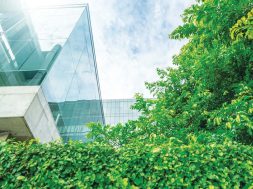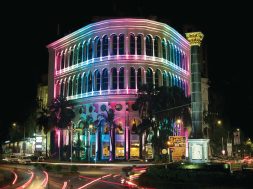dbHMS won the Nalanda University design competition along with Vastushilp Architects. The buildings of the university would be designed on the concept of “net zero” energy consumption
dbHMS is a team of young entrepreneurs who have been doing creative and innovative work in India and USA. The company is known as an “innovative brain” in number of competition winning entries in building industry. Its latest achievement has been winning the Nalanda University design competition along with Vastushilp Architects. The university will be a trendsetter project with a goal to achieve net zero energy, net zero water and net zero waste for a development of over 335 acres. dbHMS offers specialised and focused sustainable and engineering design solutions in Indian and USA market. With in-depth understanding of Indian climate, culture and having worked on latest technologies in USA, dbHMS becomes a perfect bridge for projects, which are looking for contextual but innovative solutions. Started operation in India in 2009, dbHMS has been part of various projects where it has been successful in creating contextual but smart technology solutions.
Some key projects Institute of Rural Research and Development, GurgaondbHMS designed a radian cooling air conditioning system for the project. Various air-conditioning options were compared in energy simulation software to select the most appropriate system for the project. The project uses radiant cooling technology for condition the space. This technique has reduced the overall air circulation requirement by 70 per cent. There is an equal cooling and conditioning cost is 40 per cent less as compared to traditional air-conditioning. The project also has state-of-the-art building system monitoring system and capacity to monitor control and track energy consumption of the building. The project is also certified LEED platinum building.
IIT Gandhinagar, Student Mess, GujratdbHMS is designing a passive down drop cooling strategy for the Student Mess building. The building volume is designed to work as a passive cooling system. It has a central supply tower and peripheral exhaust shafts. Misting is done at the top of central shaft. Misting reduces the air temperature and at the same time air becomes heavy. Heavy air drops down pushing warm air out from exhaust shafts. Volumetric balancing of the building is done through computational fluid dynamic analysis. The building will achieve comfort with marginal consumption of electricity.
Nalanda University, BihardbHMS is working with Nalanda University to finalise a net-zero energy master plan for the new university campus in Rajgir, Bihar. dbHMS’s innovative site-wide energy plan features a Desiccant Assisted Evaporative (DEVAP) cooling strategy, which relies on an array of towers throughout the site to direct dehumidified air across bodies of water. This is the first time this system will be used in India. The system, which reduces humidity in the air, will allow engineers to utilise simple cooling principles to create a site-wide microclimate across the campus.
Cookie Consent
We use cookies to personalize your experience. By continuing to visit this website you agree to our Terms & Conditions, Privacy Policy and Cookie Policy.









